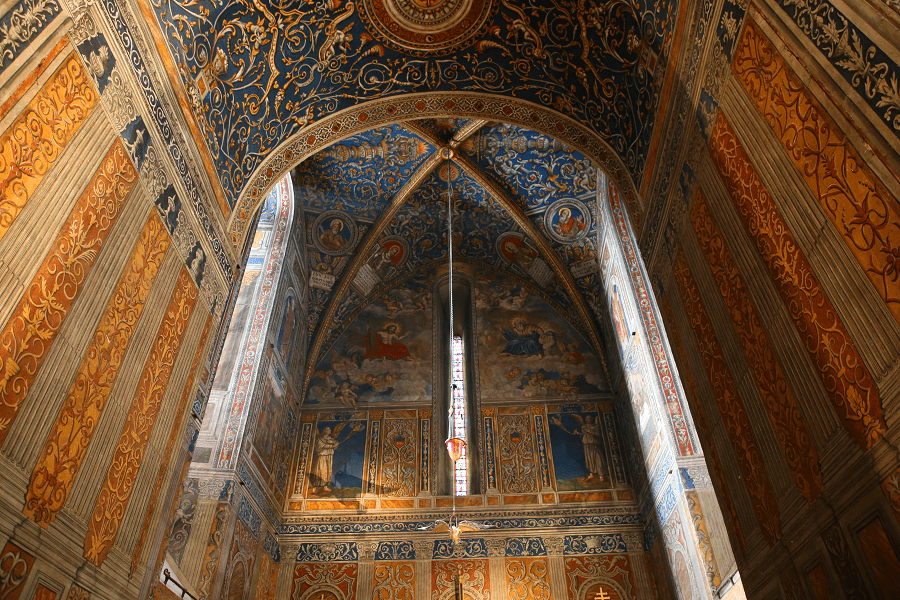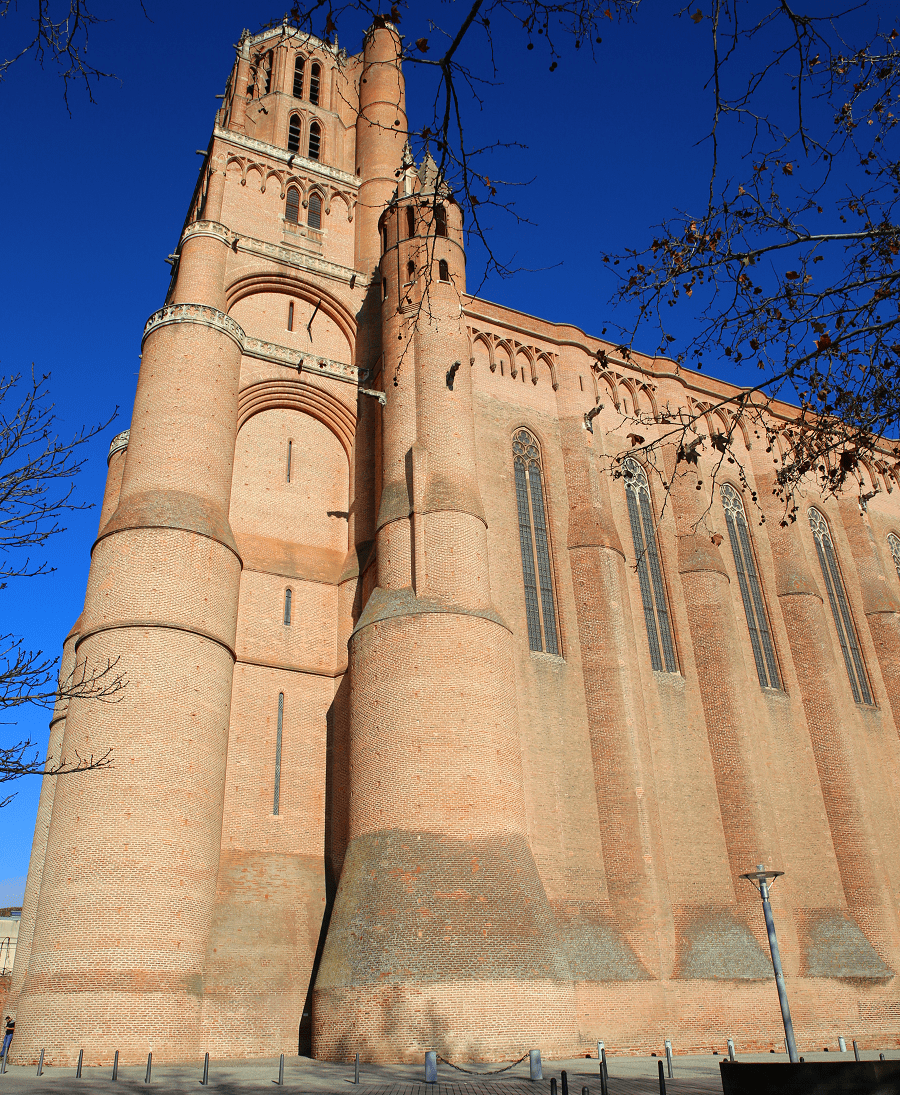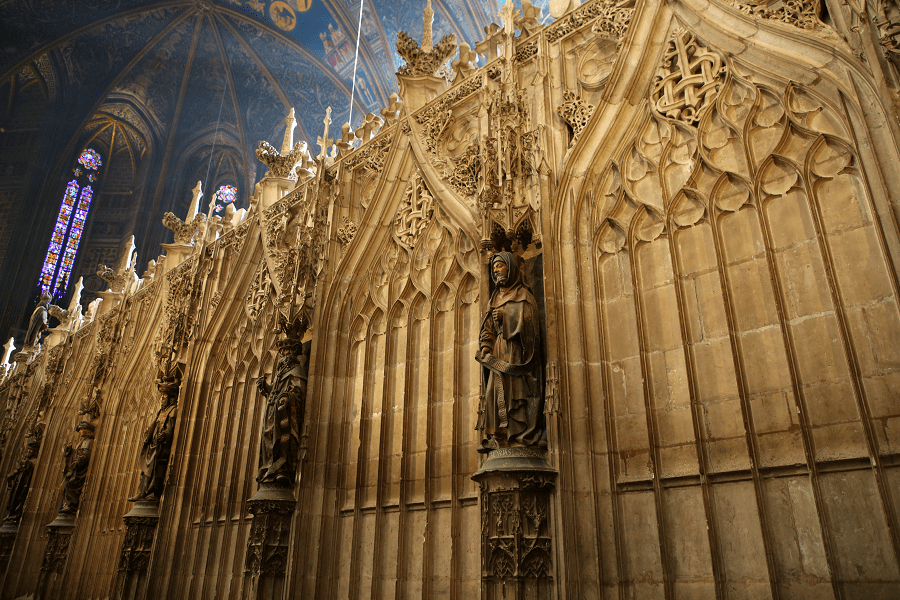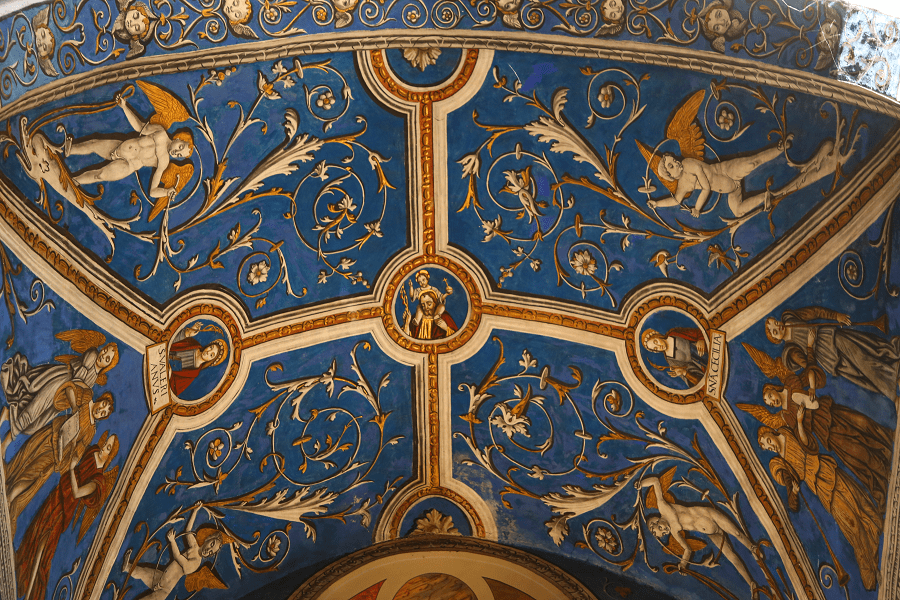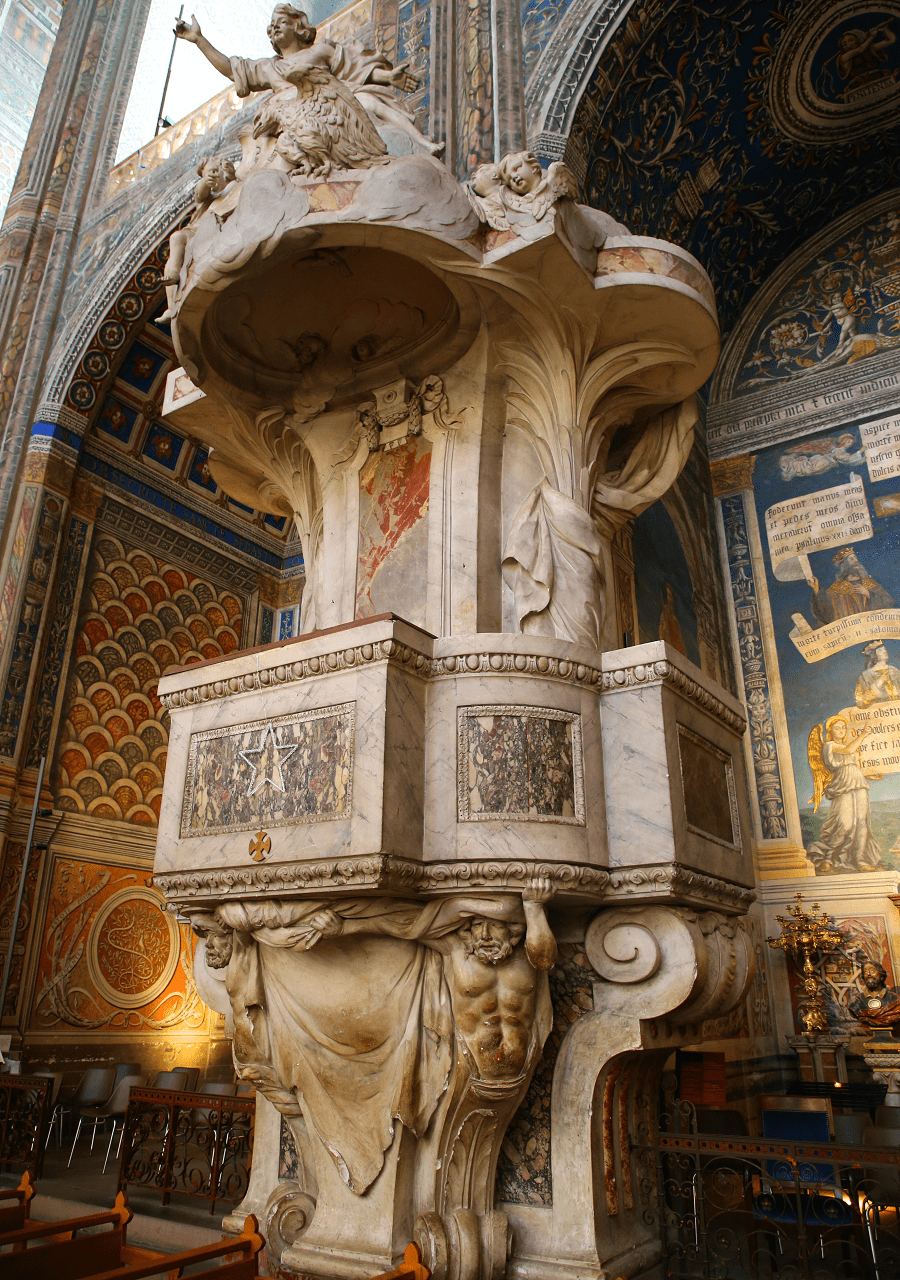Sainte-Cécile d’Albi Cathedral (Cathédrale Sainte-Cécile d’Albi) is the seat of the archdiocese of Albi, in the Tarn department in Occitania (France). It is built on a rocky peak that dominates the Tarn river.
It took two centuries to construct (from 1282 to 1480).
The building surprises with the contrast between its austere exterior appearance of a military fortress and the pictorial and sculptural richness of its interior. An unrivaled monument, it asserts its power through a style typical of the Midi Languedoc, southern Gothic. Its unique style is reinforced by its interior decoration.
Sainte-Cécile Cathedral, classified since July 31, 2010 on the UNESCO world heritage list with the Episcopal city of Albi, is today one of the most visited cathedrals in France. The archiepiscopal seat (of Albi, Castres and Lavaur) has been occupied by Mgr Jean Legrez since 2011. The archpriest of the cathedral is Father Paul de Cassagnac.
In addition to its status as an archiepiscopal church, it was elevated to the title of minor basilica, a dignity granted by Pope Pius XII on May 9, 1947. The related celebrations were presided over by Mgr Roncalli, then apostolic nuncio in Paris and future Pope John XXIII.
Bernard de Castanet (1240–1317), who became Bishop of Albi in 1276, was the key figure behind the construction of the Gothic cathedral.
A judge and lawyer, he had been an officer of the Inquisition for Languedoc and later became a cardinal. He raised funds for the new building by setting aside one-twentieth of the revenue of the chapter and by offering spiritual incentives to parishioners who donated a tenth of their income.
He also made imaginative use of the relics of Saint Cecilia, possessed by the church, in his fundraising. He economised by using brick (easier work) rather than stone to construct the new cathedral.
While the cathedral was being built, he also began construction of a new bishop’s palace and other supporting buildings.
One result of the battle against the Cathars was the fortress-like appearance of the Cathedral of Albi. It was intended to illustrate the power of the bishop, his unity with the king and his fierce resistance against heresy and religious enemies.
The cathedral was constructed beginning with an apse at the east end and building west through the choir, between 1282 and 1300. Bernard de Castanet died in 1317. The nave walls were built, topped by channels to carry off rain water, between about 1310 and 1340, followed by the base of the bell tower, built between 1355 and 1366, and the construction of the vaults over the nave. Work on the nave was completed in 1330.
A new bishop, Dominique de Florence (in office 1397–1410), completed the monumental portal on the west side. There was a long lull before construction resumed under another bishop, Louis d’Amboise (1474–1505), a counsellor of Louis XI of France and Charles VIII of France. The cathedral was finally consecrated on 23 April 1480. A cross placed on the west wall on that date commemorates that event.
Working hours:
Wednesday
10 AM–6:30 PM
Thursday
10 AM–6:30 PM
Friday
10 AM–6:30 PM
Saturday
10 AM–6:30 PM
Sunday
10 AM–6:30 PM
Monday
10 AM–6:30 PM
Tuesday
10 AM–6:30 PM
How to get to?
From Paris: 7 hr 30 min (681 km) via A20
From Toulouse: 1 hr 3 min (78.0 km) via A68
From Andorra: 3 hr 15 min (256 km) via A68
From Madrid: 9 hr 1 min (787 km) via A-2
From Monaco: 6 hr 13 min (545 km) via A8
From Moscow: 37 hr (3,421 km) via E30/M1
From Belgrade: 19 hr 52 min (1,849 km) via E70
From Istanbul: 30 hr (2,798 km) via E70
From Bern: 8 hr 13 min (697 km) via A1
See here Pyrenees travel guide
See here France travel guide
See here Spain travel guide






